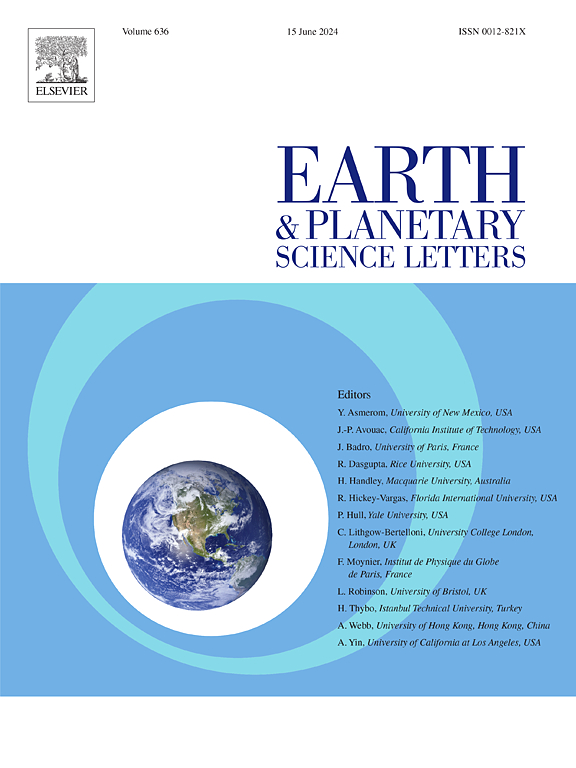成团同位素制约煤层甲烷中的热生和次生微生物甲烷起源
IF 4.8
1区 地球科学
Q1 GEOCHEMISTRY & GEOPHYSICS
引用次数: 0
摘要
甲烷是一种经济能源,也是一种强效温室气体。区分次生微生物甲烷和热成因气体对于天然气勘探和考虑全球碳循环中的地下微生物活动非常重要,但仍然具有挑战性。为了了解天然气系统中甲烷起源的控制因素,我们研究了沁水盆地高热成因煤层气(CBM)储层中的甲烷团块同位素分布。在这里,近平衡块状同位素分布(Δ13CH3D 和 Δ12CH2D2)推断出温度区间为 21.6-252.3 ℃。高温热力学平衡最有可能代表煤化过程中煤层气的原始热成岩特征。低温平衡的团块同位素分布表明,微生物通过增加酶催化的同位素交换,改变了 CH4 同位素键的排序。来自团块同位素的独立约束与其他地球化学和基因组证据相结合,证实了高度成熟储层中生物降解产生的显著次生微生物甲烷。因此,甲烷团块同位素可以作为明确的示踪剂来区分次生微生物甲烷和热源气体,从而提供将它们分别纳入全球甲烷预算的能力。本文章由计算机程序翻译,如有差异,请以英文原文为准。
Clumped isotopes constrain thermogenic and secondary microbial methane origins in coal bed methane
Methane is an economic energy resource and potent greenhouse gas. Distinguishing secondary microbial methane from thermogenic gas is important for natural gas exploration and consideration of subsurface microbial activity in the global carbon cycle, but remains challenging. To understand controls on methane origins in natural gas systems, we investigated the methane clumped isotopologue distributions in the Qinshui Basin high-thermal maturity coal bed methane (CBM) reservoir. Here, near-equilibrium clumped isotopologues distribution (Δ13CH3D and Δ12CH2D2) inferred a temperature interval of 21.6–252.3 °C. The high-temperature thermodynamic equilibrium most likely represents original thermogenic CBM characteristics during coalification. The low-temperature equilibrium clumped isotopologue distributions suggest microbial alteration to CH4 isotopic bond ordering by increased enzymatically catalyzed isotopic exchange. The independent constraints from clumped isotopes, integrated with other geochemical and genomic evidence, confirm notable secondary microbial methane from biodegradation in the highly mature reservoir. Thus, methane clumped isotopes can be used as unequivocal tracers to distinguish secondary microbial methane from thermogenic gases and hence provide the ability to incorporate them separately into global methane budgets.
求助全文
通过发布文献求助,成功后即可免费获取论文全文。
去求助
来源期刊

Earth and Planetary Science Letters
地学-地球化学与地球物理
CiteScore
10.30
自引率
5.70%
发文量
475
审稿时长
2.8 months
期刊介绍:
Earth and Planetary Science Letters (EPSL) is a leading journal for researchers across the entire Earth and planetary sciences community. It publishes concise, exciting, high-impact articles ("Letters") of broad interest. Its focus is on physical and chemical processes, the evolution and general properties of the Earth and planets - from their deep interiors to their atmospheres. EPSL also includes a Frontiers section, featuring invited high-profile synthesis articles by leading experts on timely topics to bring cutting-edge research to the wider community.
 求助内容:
求助内容: 应助结果提醒方式:
应助结果提醒方式:


